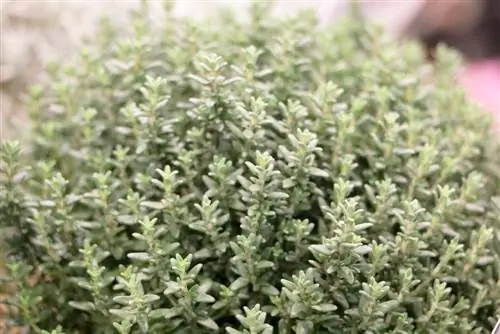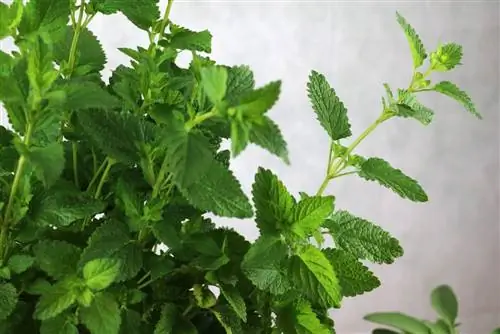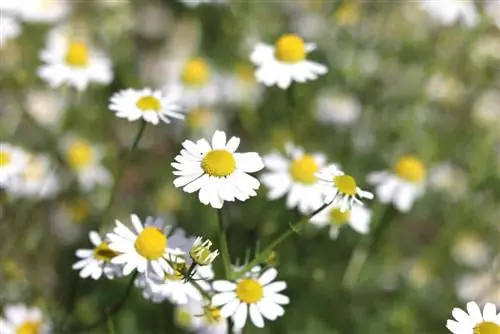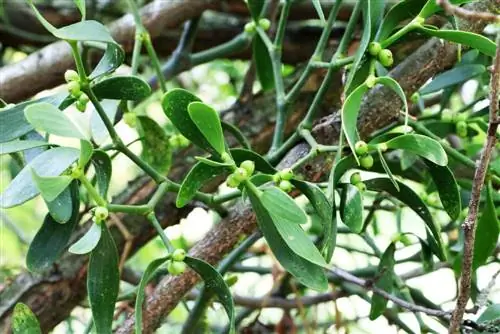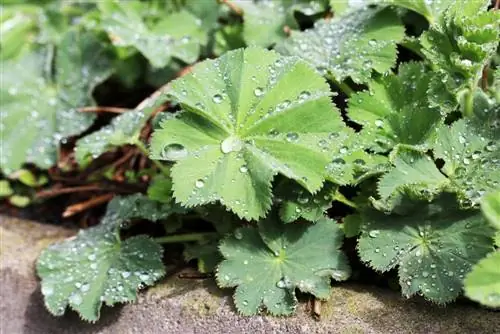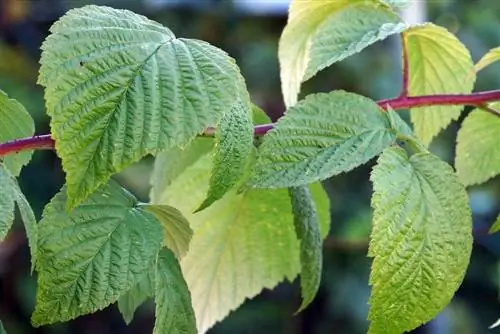- Author admin [email protected].
- Public 2023-12-17 03:39.
- Last modified 2025-01-24 12:45.
As a home remedy, herbal tea is very popular for many everyday complaints and mood disorders. Such tea not only relieves stomach aches or colds, it also tastes very good and is inexpensive. If you collect and dry the plants yourself, you will also avoid unnecessary transport routes and packaging waste. So there are many reasons to make a cup of tea again.
Which herbs are suitable for tea?
Walk along a supermarket shelf with herbal teas and you will see how diverse tea herbs are. In addition to classic medicinal herbs, this includes many types of flowers and leaves from various trees and shrubs, but also some “weeds”. Some of them have a very strong taste; these herbs should be used sparingly in mixtures. Other parts of the plant taste subtle and have a lot of mass. You can use these well as fillers.
Tip:
Sensitive people may want to get tested for allergies before collecting tea herbs.
Popular tea herbs:
- birch leaves
- Stinging Nettle
- Blackberry Leaves
- Strawberry leaves
- Vervain
- Daisies
- Gundermann
- Raspberry leaves
- elderflower
- St. John's Wort
- Chamomile
- Linden blossoms
- Dandelions
- Melissa
- Mint
- Marigold
- Yarrow
- Ribwort Plantain
Tip:
Many plants have inedible or even poisonous counterparts. Therefore, only harvest plants that you know really well. Dried tea herbs are difficult to identify later.
When is the best time to collect herbs?
Most classic tea herbs should be collected shortly before the flowers begin, which limits the harvest time to a greater or lesser extent. The ideal time is therefore often in spring. Plants that bloom from spring to autumn, such as nettles or marigolds, can be harvested practically all summer long.

Apart from the flowering period, there are other points to consider when collecting herbs. It is best to harvest on a dry day in the late morning. The dew should have dried up and the last downpour should have passed a few days ago. Then the plants have stored less water and the aroma is more intense. This also reduces drying time.
Where can I find tea herbs?
Even without planned herb cultivation, you can collect many tea herbs in your own garden. Ribwort plantain, daisies and ground ground often establish themselves, as do yarrow, dandelions and nettles. Walk through your garden with your eyes open and perhaps armed with a herbal book and you will be amazed at the tea herbs you find there. However, plants for herbal tea should not be chemically fertilized or subjected to heavy stress, as is often the case on a lawn, for example.
Looking for herbs in nature is also a lot of fun. However, you should exercise some caution here. The level of pollution on busy roads is now well known. However, do not harvest plants on the edges of conventionally maintained fields. Pesticides or fertilizers may have been used in the fields and spread to the surrounding area by wind and rain.
When harvesting berries and tea herbs in the forest, people often warn about the eggs of the fox tapeworm. Even though the risk of infection may be small, you shouldn't ignore it entirely. Temperatures above 70 °C kill the eggs, but are not recommended for treating herbs that are to be dried.
Tip:
Children often taste herbal tea much better if you have collected and dried the ingredients yourself.
How should I collect tea herbs?
When harvesting tea herbs, be careful not to uproot the plant, cut off too much of an herb, or otherwise damage the plant. This will ensure the continued existence of the plant and allow you to harvest again later in the same place. Do not transport your herb harvest in a plastic bag, as the plants will sweat and spoil easily. A basket is perfect; it has plenty of space and air for your collected items. Also, only harvest absolutely he althy and undamaged plant parts.
Tip:
If you only harvest a portion of the plants you have found in nature, you will be contributing to the preservation of the species.
How are herbs dried?
So that your collected plants dry quickly, you should avoid using water as much as possible. Only rinse briefly if this is really necessary. Subsequent patting dry is essential. You can chop up your tea herbs before drying or dry them whole and later “rebble”, i.e. rub between your fingers, so that the leaves separate from the stems. Which drying method you choose depends on local conditions, your preferences and the weather.
Tip:
Dry and store your herbs individually and mix them individually if you want to make a tea.
Out in the air
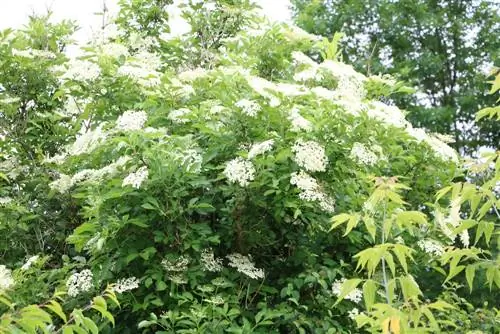
If it is to be dried outside, then dry weather is necessary. If the humidity is high, there is a risk of mold. Light wind is ideal as it speeds up the drying process. On the other hand, blazing sun is not recommended, as the plants to be dried will burn easily, the valuable ingredients will be lost and the aroma will diminish. Make small bouquets and hang them in an airy, warm and shady place. After a few days your tea herbs should be dry.
In the apartment
The kitchen is generally not very suitable for drying herbs. The humidity is usually higher than in other rooms. In addition, the dry season is often longer than outside. Make sure the drying room is adequately ventilated and check the dry goods regularly for moisture. When drying lying flat, turning every day is necessary.
In the oven
When drying in the oven, you should be particularly careful, otherwise the delicate herb plants will burn quickly. To do this, you should know your oven very well. Set the temperature to the lowest setting. Place the tea herbs on a baking tray that you have previously lined with baking paper. Place the tray in the oven and leave the door slightly open. Turn the dried food very often and remove already dried plant parts from the oven immediately.
In the dehydrator
Extra care should be taken when drying herbs because they burn easily. Be sure to keep the temperature low, more than 40 °C is not recommended. The drying time is then around two to four hours. Ideally, you can adjust the temperature on your dehydrator. Nevertheless, regular checks are highly recommended.
Tip:
Occasionally drying plants with silicone gel or cat litter is recommended. However, plant parts dried in this way are not suitable for consumption or for making tea.
How are dried tea herbs stored?
Tea herbs can be stored in a cool, dry and dark place for a few months. This means you can make fresh tea all winter long. To do this, herbs must be completely dry. Dark screw-top jars are ideal for storage. They keep out light and humidity. Nevertheless, you should check your tea herbs regularly and dispose of them at the first signs of moisture.

